Learn how to care for a bummer lamb or an orphan lamb until it can eat hay or grass. Read these tips that will lead to success.

This post contains affiliate links which means I make a small commission at no extra cost to you. See my full disclosure here.
It’s lambing season! Last year we made it through without needing to provide any type of assistance to our breeding ewes. This year however we had an unfortunate event where one of our ewes didn’t make it while delivering her second lamb. She had successfully had her first who was healthy and strong, but despite our best efforts we lost her and the other lamb. We were left with this little ram lamb who was healthy strong and so sweet!
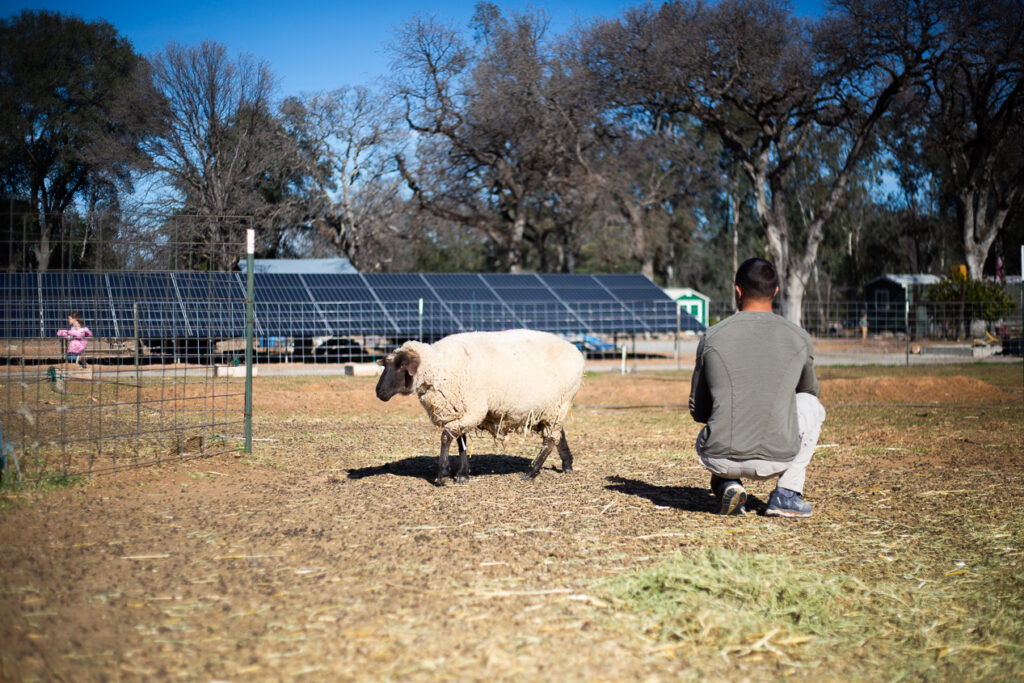
Thankfully this lamb was able to get the colostrum from his mother because he had time to nurse while she attempted to deliver the second lamb. We weren’t concerned about colostrum but did want to make sure he got everything he needed.
He is now a healthy strong little ram lamb, that we plan on keeping as our replacement ram, since the one we have now is getting up there in the years. Our hopes is that, since he is bottle fed, he will make a docile ram around the family.

What is a bummer lamb?
Essentially lambs that have been rejected, orphaned, or not able to be fed by ewe mothers are called bummer lambs. Sometimes the ewe isn’t able to produce enough milk from health conditions like mastitis.
Sometimes bummer lambs can be paired with another ewe mother who has recently given birth, if they are willing to nurse them. If this is not possible the only option is to bottle feed the lamb! Keeping a bummer lamb can be a lot of work, but can be a fun project for the whole family if everyone helps.
It is important to note that bummer lambs are easy to get attached to, but might not make it. Especially if the lamb was rejected by the mother or is a triplet, who may have health conditions. In the case of an orphaned lamb that is perfectly healthy, your chances are good as long as you take necessary precautions.

Supplies you will need to care for a bummer lamb
- Heat Lamp or another source of heat
- Bulbs
- Thick bedding
- Colustrom supplement
- Milk Replacer
- Bottle (this is the bottle we have had the most success with)
- Elastrator and Bands

Start with colostrum
The first milk that comes from mother sheep after birth is called colostrum. Unlike normal milk it is full of protein, fats, and antibodies to get the lamb off to a good start. Lambs should have around 16 fl oz of good quality colostrum over the first day of its life. This should be fed over the course of 6 to 8 feedings. Getting the lamb to drink colostrum should be step number one to give it the best chance of life. Keep in mind you can also give colostrum from other sheep or even cows! Sometimes local farms will have some stored up this is the best option. Sources for colostrum:
- Other sheep in the herd (graft on or hand milk)
- Cows
- Frozen supply
- Colostrum supplement
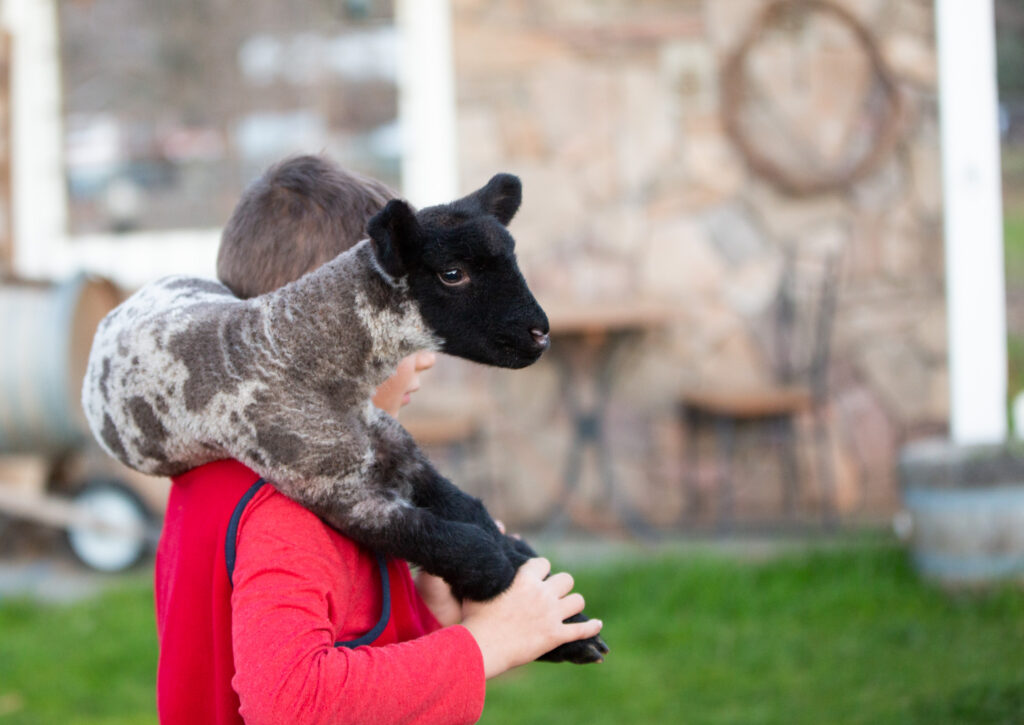
How to feed a bummer lamb
- Start with colostrum. Right after birth a lamb needs colostrum! Over the course of 6-8 feedings supply the bummer lamb with colostrum. If you are using frozen colostrum make sure to thaw it out in warm water. Do not microwave colostrum because this can damage the antibodies and proteins in it.
- Teach the lamb to drink from a bottle. The lamb might not take the bottle right away. You may need to get the lamb used to the nipple by putting into the lambs mouth and letting chew and suckle. This might take up to 48 hours. Stay persistent! If the lamb hasn’t caught on try changing the type of nipple/bottle.
- Feed the lamb milk replacement. The lamb will need to begin by drinking 4-5 oz of milk replacement every four hours. Be sure to follow instructions on the replacement container, as some brand’s mixing instructions differ from others.
- Increase the amount of milk replacement the lamb drinks gradually. Over the course of the first couple weeks, gradually increase the amount it eats to 16oz every four hours. Feed that much to the lamb for two weeks and then increase the amount you feed it again, to 24oz three times a day for two weeks. After that, you can begin reducing the amount of milk replacement you are giving the lamb, down to 16oz twice daily.
- Introduce hay, grass, and water. When the lamb is several weeks old you can begin giving it access to grass, hay, and water. Once the lamb is over a month old, you should be reducing its milk intake. By the time it is three months old it can be weaned.

How to care for a bummer lamb
- Give the lamb shelter. A lamb without a mother will need shelter because it won’t have the protection and warmth from a mother. The lamb should have access to a pen at all times, but be locked in at night to protect it from predators like coyotes, mountain lions, fox, and even large hawks! Keeping it warm from wind and low temperatures is also important.
- Supply warmth for the lamb. Shelter on cold days isn’t enough, because remember, the lamb does not have the warmth from a mother. You will need to provide additional heat. Dry thick bedding like straw or savings with a heat lamp will be enough. Do make sure the heat lamb is in a safe location with no risk of fire.
- Give the lamb time outdoors. During the day, the lamb needs to be able to be in the fresh air. Even in the cold winter months let the lamb have access to outdoors with the other lambs in the middle of the day.
- Socialize the lamb. Because bummer lambs are bottle fed by humans, they have a tendency to bond with humans. If at all possible, you should make sure your lamb spends time with other lambs and sheep. Put it out in a pasture with other sheep and let it explore new relationships with other sheep. This will help the lamb to learn how to function as a sheep, as opposed to as just a pet in your home forever.
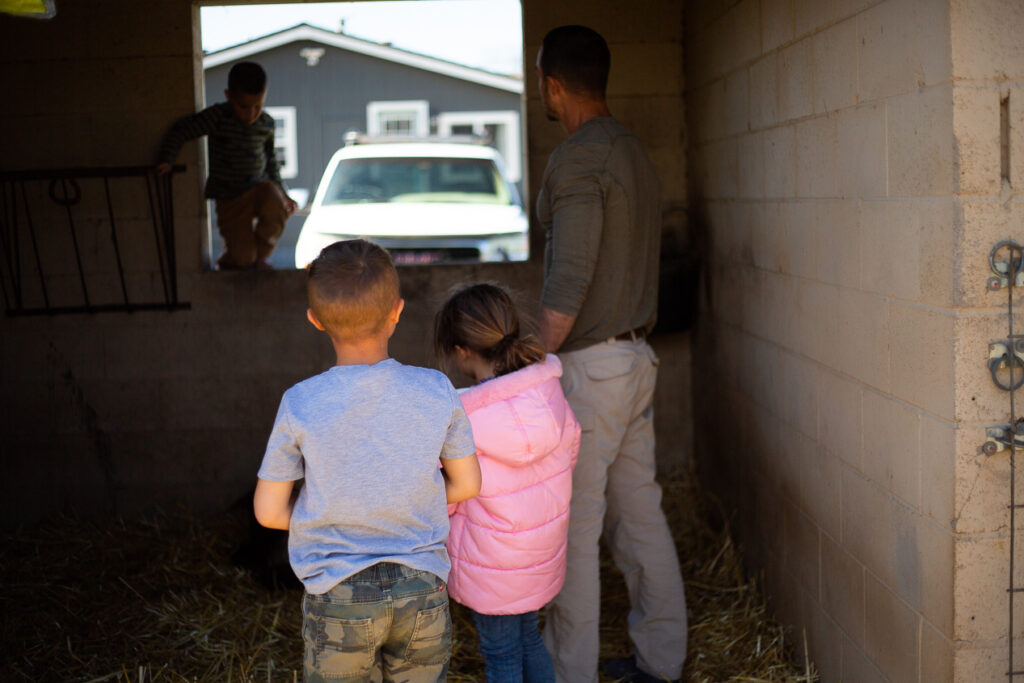
Keep the lamb healthy
- Get the lamb vaccinated. You will need to get your lamb vaccinated early in its life, at about 3 months of age. Vaccinations are particularly important for lambs that did not get enough, or any, colostrum. If the antibodies and immune system defenses in colostrum are not given to a lamb, you will need to supply them through a vaccination. You can either do the vaccination yourself or have a veterinarian do it.
- Dock the lamb. Docking the lamb is a process in which the tail is removed. It is typically done when the lamb is between a week and three weeks old. The modern way of docking a lamb is done by placing special rubber bands around the tail and testicles. If your lamb has testicles, these can be removed at the same time, in much the same manner. We use these elastrator tool and rubber bands to dock and castrate.
- Get the lamb wormed. You will also want to have your lamb de-wormed when they are about a month old. This is done with a special tool, called a drenching gun, that is used to give the lamb the medication orally. Discuss the best drenching medications for your lamb with a livestock veterinarian. Dosing will vary depending on the specific drenching medication you use. Look at the packaging and calculate the dose for your lamb’s specific age and weight.

Bummer lambs can be a bargain
Full times farmers or homesteaders often times do not have time to care for a bottle lamb. They cabe be sold at a great price if you are looking for them. Often times the farmer is trying to sell off bummer lambs as quickly as possible, so you can get them at a good price. Keep in mind, that you shouldn’t buy a bummer lamb if you do not already have sheep. Lambs are herd animals and do not do well with solitude. They need other sheep to bond and learn from.

Where to buy bummer lambs
If you are in the market for a bummer lamb, check local farms. You can contact local farms in person or through social media groups like Facebook. There are local livestock groups where people buy and sell animals through Facebook. Local auctions are also a great place to check for lambs at a bargain.
Be sure you know the age of the bummer lamb
If you can, ask when the lamb was born. If you know how old the lamb is, you will better know how to care for the lamb. For example, if you get your hands on a lamb that is within 24 hours of being born, you will need to supply it with colostrum.
Ask the farmer if they have any colostrum in the freezer
If you are purchasing the bummer lamb from a farmer, ask if they have any colostrum stored in the freezer that you can have. If not you need to purchase a colostrum supplement.

The lamb should be thriving by the time it is 1 week old
If you are purchasing a bummer lamb that is already about 1 week old, it should be vibrant and full of life. If the lamb looks lethargic or low energy, the lamb might not be healthy. Before you bring the lamb home, check the suckle reflex by offering your finger. If the lamb is too weak to nurse, you may have to tube feed it.
Ask about the sheep’s breed.
Knowing what type of breed the lamb is will also help you understand how to care for it. Is it a hair or wool sheep?
Has the lamb had any vaccinations and/or dewormer?
You need to make sure you do not give any medication or vaccination twice.
If the lamb was born a ram, was he castrated?
Of course if you are looking for a breeding ewe, you won’t want to purchase a ram. Knowing if the lamb is a ram, and also if it has already been castrated, is essential to knowing if the purchase lines up with your goals.
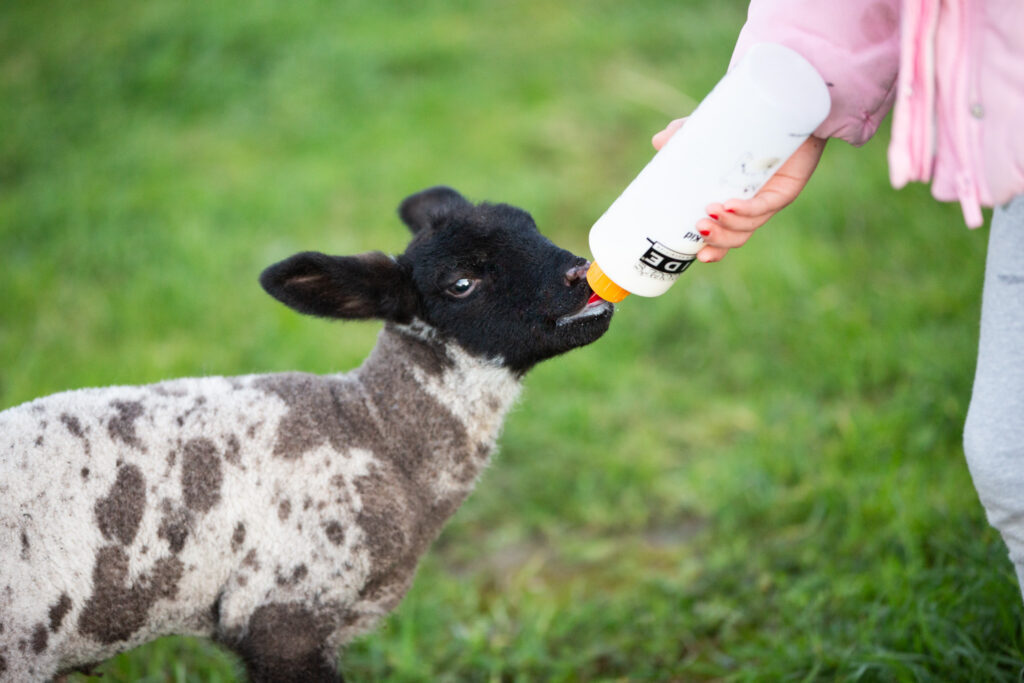
Frequently Asked Questions
What do you feed bummer lambs?
Bummer lambs will need colostrum (or colostrum replacer) within the first 24 hours. Then they are grown on a milk replacer for the next three months until they can eat hay or grass.
What to do with a rejected lamb?
A rejected lamb can be a lot of work. Your options are to sell the lamb, try “grafting” it onto another ewe that recently gave birth, or bottle feed it.
How do you take care of an orphaned lamb?
An orphaned lamb will need colostrum, if it hasn’t already gotten any from the mother, then milk replacer until the orphaned lamb can eat grass or hay.
How long do you have to bottle feed a bummer lamb?
A lamb should be bottle fe for at lease 3 months. It can be fed longer of course, but should have milk replacer for at least this long.
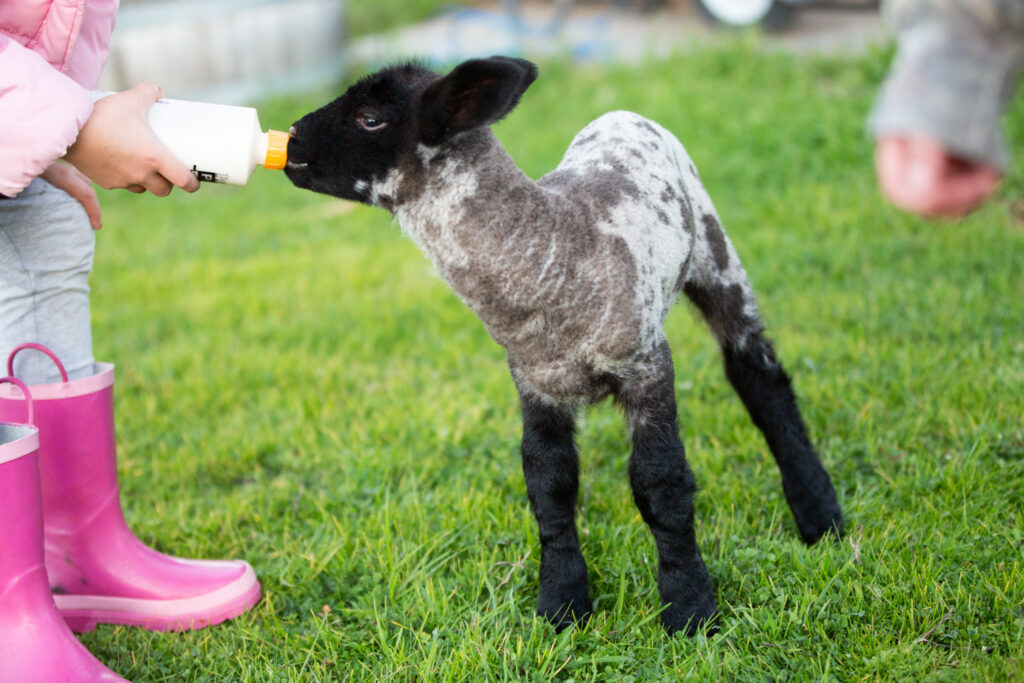
You may also like:
What to Do When Sheep Give Birth
Homesteading for Beginners (What you Actually Need to Know)
What to Have on a Homestead | Homestead Planning
101 Homesteading Books You Need at Home
Pin it for later !



Leave a Reply